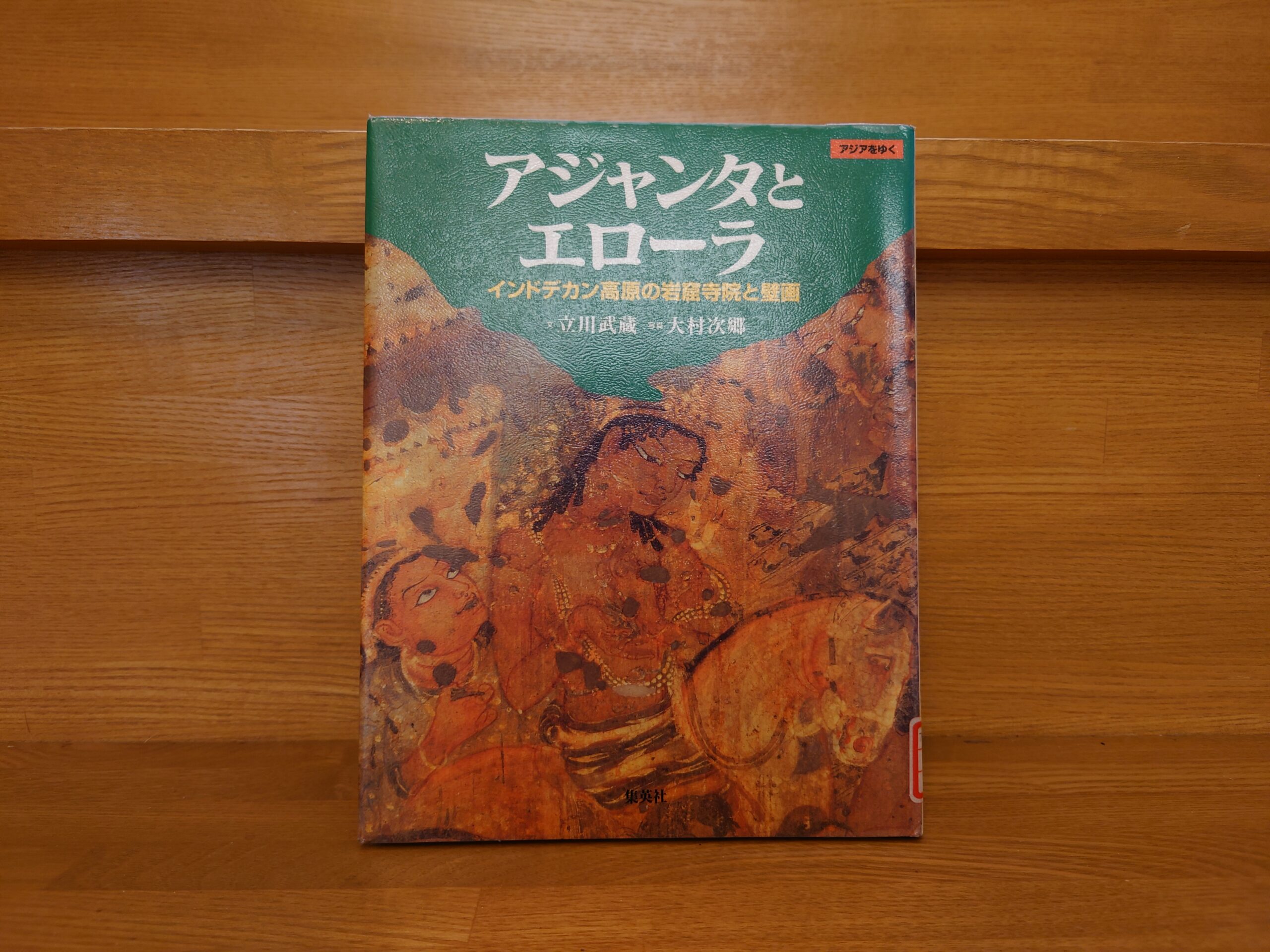Overview and Comments on "Ajanta and Ellora: Rock Temples and Murals of the Deccan Plateau of India" - A recommended guidebook to India's proud world heritage sites!
The book introduced here is "Ajanta and Ellora: Rock Temples and Murals of the Deccan Plateau of India," written by Musashi Tachikawa and photographed by Jigo Omura, published by Shueisha in 2000.
Let's take a quick look at the book.
In Ajanta, the story of Buddha unfolds in a series of murals that are considered to be the white-hot highlights of Indian art history. In the Hindu caves of Ellora, Shiva and Vishnu are dug out in lively dancing and fighting scenes.
The essence of Indian art is seen in the murals of Ajanta discovered in the jungle by a tiger-hunting officer, and in the massive sculptural architecture of Ellora, which was excavated from the scorching bedrock. A journey through the fertile Asia.
AmazonProducts Page.


This book will be a recommended guidebook for the World Heritage Sites of Ajanta and Ellora in India.
Both sites are close to Mumbai, a major city in Western India, and many tourists visit here as one of the highlights of their trip to India.
Ajanta is a Buddhist site built from the 1st century B.C. to the 7th century A.D. Ellora is a site where Hindu, Buddhist, and Jain caves were built from the 6th to the 10th centuries.
Ajanta and Ellora are places that you may have heard of, but you may not know what they are like. I was one of them. I had a vague image of it as a "Buddhist site in India," but I had no idea when it was built and what kind of history it had. To begin with, I did not even know that there were Hindu and Jain caves in Ellora.
In this book, you can learn such ajanta and elora in an easy-to-understand way.
First of all, the photos are abundant! Jigo Omura is in charge of photography, and you can enjoy the powerful ruins and the beauty of Indian art as much as possible.
And as for the author, Musashi Tachikawa.The Hindu Pilgrimage.andThe Shape of the Sacred: A Journey through Eurasian Civilizations.We have featured a number of books on this blog.
Tachikawa's storytelling style is alive and well in this book, making it an enjoyable way to learn about Ajanta and Ellora.
The explanations of the sculptures and paintings at both sites were especially interesting. The commentary on the Buddhist tale of Jataka was particularly moving. The commentary was not just about the ruins or the art, but it also went deeper into the historical background and thought of the times, which drew me in.
I am also planning to visit Ajanta and Ellora this year. This book was a very helpful guidebook for me. I highly recommend this book.
This is "Ajanta and Ellora - Rock Temples and Mural Paintings of the Deccan Plateau of India" - A recommended guidebook for India's proud World Heritage Sites! This was
Next Article.
Click here to read the previous article.
Related Articles





































